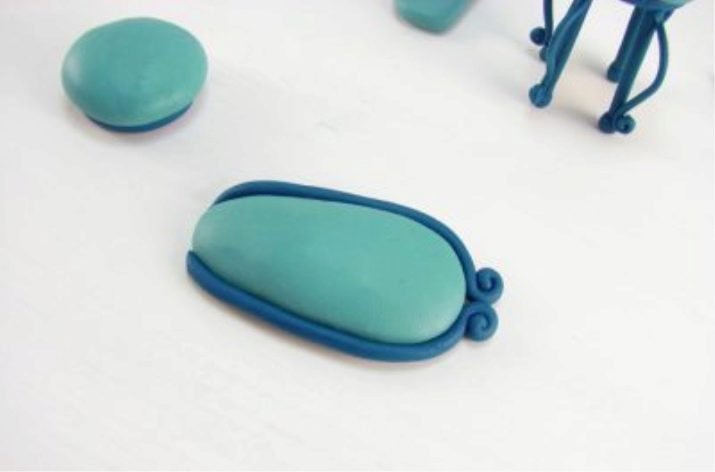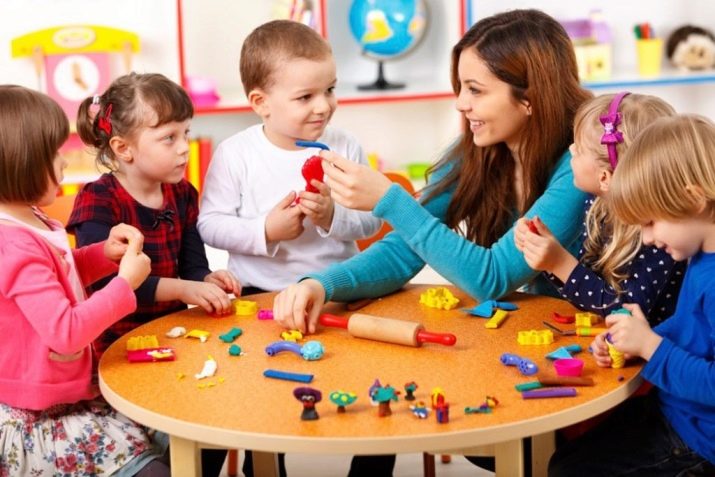Plasticine furniture molding

It is still not known for certain who invented the traditional plasticine. For the first time a model mass called Plastilin was patented by the German pharmacist Franz Kolb in 1880.

Sculpting has become a favorite pastime of children all over Europe, and the generation of 20th century artists literally grew up on plasticine. The material is good because it makes it possible to show imagination.

In the article, we will talk about plasticine furniture, which will be a great addition to a dollhouse, and also tell you step by step how to make it.

How to make a table?
To create mini-furniture with your own hands from plasticine, all kinds of matches, shreds, matchboxes can be useful. Tables are different. Consider a round coffee table for the living room.
The stages of work include several points.
- First comes pick up plasticine for the table... Bright colors are most suitable for children. For extra rigidity, you can use matches or cardboard.
-
Cut out a circle from cardboard colored paper (let it be pink) for the base of the table.
-
Knead in the hands of plasticine so that the mass becomes pliable. We stick the mass warmed up in our hands onto the circle.
-
You can use brown or gray plasticine for the table legs.... We knead a small piece in our hands, and then create 4 legs of the same size from it, first rolling the mass into sausages.
-
For hardness, we will put a match as a basis. We fasten the mass along the match, and twist the end of the leg into a spiral. We repeat the same with the three remaining legs.
-
We connect all 4 legs together - this will be the base of the table.
- We place a tabletop on the legs. The craft is ready!


To strengthen the table, it is best to keep the table in the refrigerator for a while.
Modeling chairs
The table is ready, now you need chairs. They can be both simple and elegant (depending on the interior of the dollhouse). Let's consider 2 options.
Option number 1
Let's list the stages of work.
- Choose from a set of 2 colors you like. Take blue and blue (nautical colors) for example.
- We form a thick sausage from blue plasticine and divide it into 4 parts with a stack.
- We roll the mass into identical balls.
- Give the first two balls the shape of a drop. It is very important that they are flattened (flatten in the palms).

-
From the two remaining balls we make seats - just flatten them slightly.

-
We take blue plasticine, make the lower part of the seats out of it and connect. We also flatten the material slightly.

-
Now the most interesting stage is the creation of the legs. To do this, take a toothpick and carefully cut it into 4 pieces.

-
We process the toothpicks with blue plasticine, and attach small sausages to the ends (for visual appeal).

-
We insert the legs into the seat.

-
For beauty, each leg can be supplemented with a thin sausage curved at the tip.

-
The backs should also be beautiful. To do this, we make out a slightly flattened blue mass with flagella with monograms in the upper part.

-
In order to securely attach the back to the seat, insert a piece of a toothpick into its lower part, and then attach it to the base.

- For the greatest beauty, you can make a stack of diamond-shaped patterns on the back, and add miniature blue balls to the intersection of the lines.


Option number 2
The stages of work partially repeat the previous description.
-
We take brown plasticine (or any other color - optional) and divide it into 2 parts.
-
Flatten one of the pieces, making a square out of it.
-
Divide another piece of plasticine into 4 parts and create harnesses from them.
-
Legs, as you might guess, should be the same size. We connect the seat and legs together. For reliability, you can insert matches into the legs.
-
We take a little more plasticine from the set and add 4 slats to each side.
-
We will make the back thinner than the legs. To do this, we sculpt 2 sausages, flatten them and attach them to the sides of the seat.
-
To complete, we attach 2 slats - one at the very top, the other in the middle of the back. For a secure fit, you can use matches or toothpicks.
What else can you dazzle?
In addition to the table and chairs, the decoration of the dollhouse can complement accessories: Fruits and vegetables, as well as flowers, will come in handy on the coffee table. A bedroom cannot be imagined without a wardrobe, a bed - using your imagination, you can mold retro models or minimalist furniture.

You can create a whole house from plasticine: to dazzle chairs, a table lamp, a refrigerator, a chest of drawers. A matchbox is used for sculpting a TV - it fits perfectly in size. It is framed in the mass, and in the middle you can glue some kind of sticker or a clipping from a magazine.

Sculpting is a great way to spend time with your child and recharge with positive emotions. Any psychologist will say that joint creativity with a child perfectly unites.

For more information on how to mold a table and chair, see the video below.








